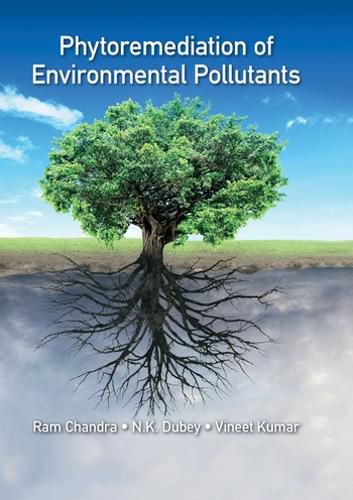Readings Newsletter
Become a Readings Member to make your shopping experience even easier.
Sign in or sign up for free!
You’re not far away from qualifying for FREE standard shipping within Australia
You’ve qualified for FREE standard shipping within Australia
The cart is loading…






Phytoremediation aids to augment bioremediation as it uses broad range plants to remediate soil, sediment, surface water and ground water that have been contaminated with toxic metals, organic, pesticides and radionuclides. This book serves to disseminate detailed up to date knowledge regarding the various aspects of phytoremediation and plant-microbe interaction. The book highlights process and molecular mechanisms for industrial waste detoxification during phytoremediation in wetland plants, role of endophytic bacteria for phytoremediation of environmental pollutants, constructed wetland treatment system for treatment and recycling of hazardous wastewater, amongst other relevant topics.
Key Features:
Focuses on phytoremediation process for different pollutants, mainly heavy metal detoxification in the presence of other co-pollutants.
Includes plant-soil-microbe interactions in phytoremediations and remediation of contaminated water.
Explores life cycle assessment of industrial waste contaminated site with organic pollutants.
Discusses hyperaccumulator versus non-hyperaccumulator plants for environmental waste management.
Includes bacterial assisted phytoremediation and siderophore formation in specific environmental conditions.
$9.00 standard shipping within Australia
FREE standard shipping within Australia for orders over $100.00
Express & International shipping calculated at checkout
Phytoremediation aids to augment bioremediation as it uses broad range plants to remediate soil, sediment, surface water and ground water that have been contaminated with toxic metals, organic, pesticides and radionuclides. This book serves to disseminate detailed up to date knowledge regarding the various aspects of phytoremediation and plant-microbe interaction. The book highlights process and molecular mechanisms for industrial waste detoxification during phytoremediation in wetland plants, role of endophytic bacteria for phytoremediation of environmental pollutants, constructed wetland treatment system for treatment and recycling of hazardous wastewater, amongst other relevant topics.
Key Features:
Focuses on phytoremediation process for different pollutants, mainly heavy metal detoxification in the presence of other co-pollutants.
Includes plant-soil-microbe interactions in phytoremediations and remediation of contaminated water.
Explores life cycle assessment of industrial waste contaminated site with organic pollutants.
Discusses hyperaccumulator versus non-hyperaccumulator plants for environmental waste management.
Includes bacterial assisted phytoremediation and siderophore formation in specific environmental conditions.